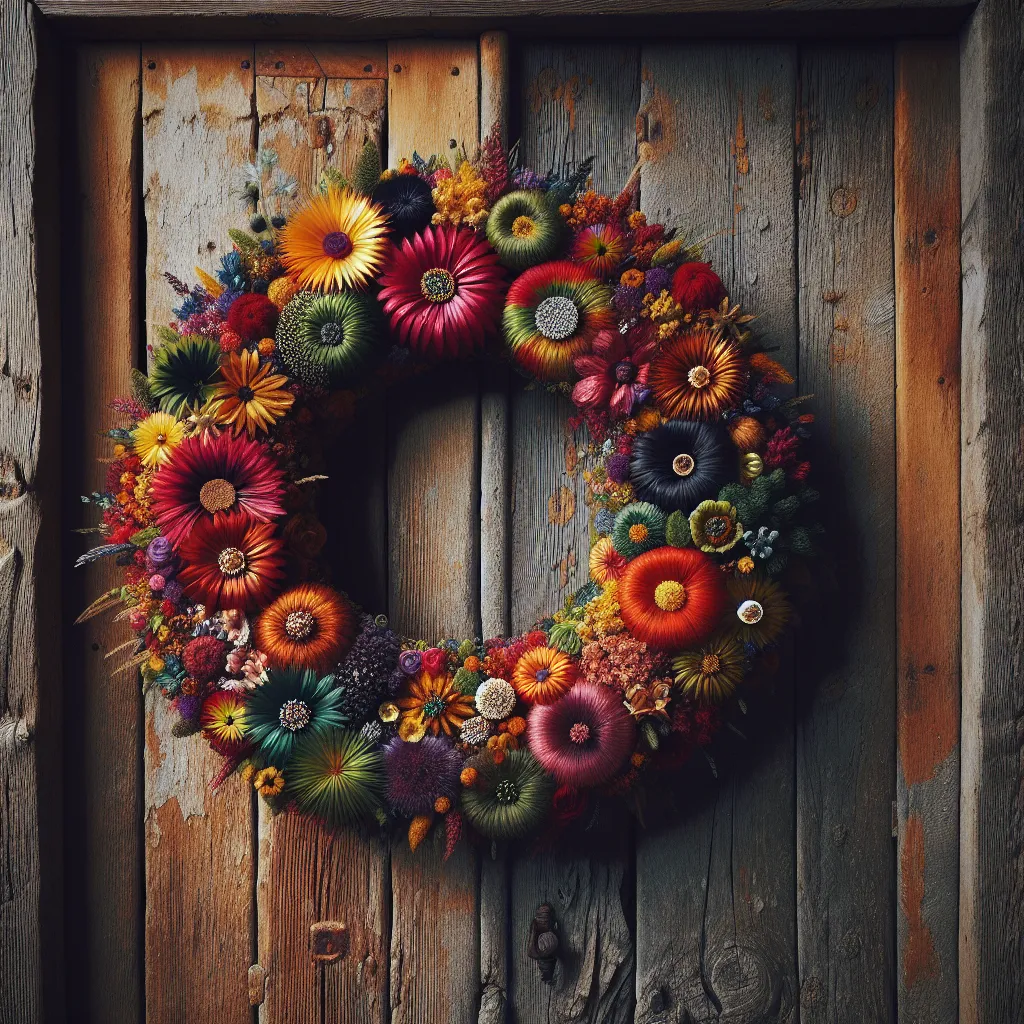The History of Wreath-Making: An Ancient Craft
Wreath-making, an ancient craft that has stood the test of time, holds a special place in the history of decorative arts. The tradition of creating wreaths dates back to ancient civilizations, where they were used for various purposes, including religious ceremonies, honoring athletes, and symbolizing victory and achievement. The ancient Greeks, Romans, and Etruscans are known to have crafted intricate wreaths using laurel, olive branches, and other foliage, often adorning them with ribbons, flowers, and symbolic ornaments.
Throughout history, wreaths have symbolized different things to different cultures. In ancient Egypt, they were seen as symbols of eternity and were used to adorn ceremonial headdresses and tombs. In Celtic traditions, wreaths made of evergreen plants symbolized strength, prosperity, and protection. The tradition of hanging wreaths on doors during festive seasons, a practice that continues to this day, is said to have originated in ancient Rome, where it was believed that decorative wreaths could ward off evil spirits and bring good fortune.
As time passed, the craftsmanship of wreath-making evolved, incorporating new materials and techniques while retaining its symbolic significance. In medieval Europe, wreaths became popular decorations in Christian religious ceremonies, symbolizing the eternal circle of life, the victory of the soul over death, and the promise of new life. During the Victorian era, wreath-making flourished as an art form, with intricate designs crafted from flowers, leaves, and ribbons becoming a symbol of beauty and elegance.
Today, the art of wreath-making continues to thrive, blending traditional techniques with modern creativity. From seasonal decorations to wedding accents, the timeless tradition of wreath-making remains a cherished craft, connecting the present to the rich history of human creativity and symbolism.
Modern Techniques for Creating Stunning Wreaths
Wreath-making, an ancient craft dating back to the ancient Greeks and Romans, has evolved over the years as a timeless tradition. While the traditional methods of creating wreaths using natural materials such as branches, flowers, and foliage continue to hold their charm, modern techniques offer a fresh and innovative approach to this art form. With the advent of new materials and tools, crafting stunning wreaths has never been more exciting.
One of the modern techniques that has gained popularity in wreath-making is the use of artificial or preserved botanicals. These durable materials not only provide longevity to the wreaths but also open up a wide range of options for colors, textures, and shapes. Additionally, incorporating unconventional elements such as metallic accents, fabric ribbons, or even LED lights can add a contemporary twist to the traditional wreath, making it a unique and eye-catching piece of decor.
Another modern approach involves the use of different bases and forms for wreaths. Instead of the classic round shape, wreath-makers now experiment with geometric frames, asymmetrical forms, or even freestanding structures, allowing for a more artistic expression and versatility in design. Furthermore, the utilization of advanced techniques like wire wrapping, weaving, and floral arranging enables crafters to create intricate patterns and elaborate designs, elevating the aesthetic appeal of the wreaths.
Moreover, the digital age has brought forth new opportunities for wreath-makers to showcase their creations and connect with a wider audience. Social media platforms and online marketplaces offer a platform for artisans to share their work, exchange ideas, and reach potential customers, fostering a vibrant community of wreath enthusiasts and creators.
In conclusion, while traditional wreath-making techniques continue to evoke nostalgia and heritage, modern approaches have injected a renewed energy and creativity into this age-old craft. By embracing innovative materials, forms, and digital platforms, enthusiasts can explore endless possibilities and continue the legacy of wreath-making for generations to come.
The Symbolism Behind Wreaths in Different Cultures
Wreath-making is an ancient art form that holds deep cultural and symbolic significance across the world. The use of wreaths dates back to ancient times, where they were often used in religious ceremonies and festivals. The symbolism behind wreaths varies from culture to culture, with each one carrying its own unique meanings and traditions.
In ancient Greece, wreaths were associated with the gods and were often worn as crowns during important events and ceremonies. They were also used to symbolize victory and honor, particularly in athletic competitions such as the Olympic Games. In Roman culture, wreaths were used as symbols of power and glory, and were often awarded to victorious military leaders and athletes.
In Christianity, wreaths are commonly associated with the Advent season, symbolizing the eternal nature of God and the cyclical nature of the seasons. The circular shape of the wreath represents eternity and the unending love of God. In many Christian traditions, the Advent wreath is adorned with four candles, each representing a different aspect of the spiritual journey towards the birth of Christ.
In Celtic traditions, wreaths were used to symbolize the cyclical nature of life, death, and rebirth. They were often crafted using evergreen foliage, which represented the eternal cycle of nature. The circular shape of the wreath was seen as a representation of the sun and its journey across the sky.
Across various cultures, wreaths are also used to commemorate important life events such as weddings, funerals, and festivals. They serve as a symbol of unity, continuity, and the interconnectedness of life. Whether it’s the vibrant floral wreaths of Hawaiian leis or the solemn remembrance wreaths laid at war memorials, the tradition of wreath-making continues to hold a special place in the hearts of people around the world.
From its roots in ancient rituals to its modern-day interpretations, the art of wreath-making remains a timeless tradition that embodies the cultural, spiritual, and symbolic richness of diverse societies.

